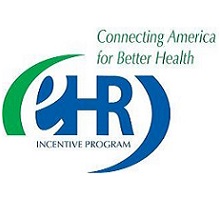 To keep you updated with information on the Medicare and Medicaid EHR Incentive Programs, CMS (@CMSGov) recently added two new FAQs providing more information on changes to the programs as a result of the CY 2017 Hospital Outpatient Prospective Payment System (OPPS) and Ambulatory Surgical Center (ASC) Final Rule. We encourage you to stay informed by taking a few minutes to review the new information below.
To keep you updated with information on the Medicare and Medicaid EHR Incentive Programs, CMS (@CMSGov) recently added two new FAQs providing more information on changes to the programs as a result of the CY 2017 Hospital Outpatient Prospective Payment System (OPPS) and Ambulatory Surgical Center (ASC) Final Rule. We encourage you to stay informed by taking a few minutes to review the new information below.
Question: Are new participants that attest only to the Medicaid EHR Incentive Program in 2017 required to attest to Modified Stage 2?
In the 2017 OPPS/ASC final rule, we stated that time and cost limitation concerns related to the 2015 Edition upgrades made it unfeasible for new participants to attest to the Stage 3 objectives and measures in 2017 in the EHR Incentive Program Registration and Attestation System. We finalized that all new EPs and eligible hospitals seeking to avoid the 2018 payment adjustment or any new participating CAH in 2017 seeking to avoid the 2017 payment adjustment would have to attest to Modified Stage 2 objectives and measures. This requirement is for those who attest to CMS through the EHR Incentive Program Registration and Attestation system. In the final rule we stated that this change would apply to Medicaid providers who usually attest to their State. However, we clarify further that this provision is only applicable to Medicaid providers who are dual-eligible and attest to CMS through the EHR Incentive Program Registration and Attestation system. (FAQ 18257)
Question: What is the policy for measure calculation for actions outside of the EHR reporting period for the Medicare and Medicaid EHR Incentive Programs beginning in 2017?
In the 2017 OPPS/ASC final rule we finalized changes for meaningful use measures (unless otherwise specified), actions included in the numerator must occur within the EHR reporting period if that period is a full calendar year, or if it is less than a full calendar year, within the calendar year in which the EHR reporting period occurs. Meaning that all actions in the numerator must occur between January 1st and December 31st for all calendar years beginning in 2017.
The following objectives and measures fall under this policy in 2017 for Modified Stage 2:
- Protect Patient Health Information: (Security Risk Analysis),
- Health Information Exchange,
- Patient Specific Education,
- Patient Electronic Access (measure 2 – VDT)
- Secure Messaging (EPs only for Modified Stage 2), and
- Public Health Reporting
The following objectives and measures fall under this policy for Stage 3:
- Protect Patient Health Information (Security Risk Analysis),
- Patient Electronic Access to Health Information (measure 2 – Patient Specific Educational Resources),
- Coordination of Care Through Patient Engagement (measure 1 – VDT and measure 2 – Secure Messaging),
- Health Information Exchange (measure 1 – Send a Summary of Care), and
- Public Health Reporting.
For more information specific to the Security Risk Assessment, see FAQ #13649. Please note that beginning in 2017, the security risk assessment must be conducted within the calendar year in which the EHR reporting period occurs.
For more information specific to numerator calculations for actions outside the EHR reporting period for the Medicare and Medicaid EHR Incentive Programs prior to 2017, see FAQ #8231. (FAQ18261)
For More Information
For more information about the EHR Incentive Programs, visit the FAQ page on the CMS website.
